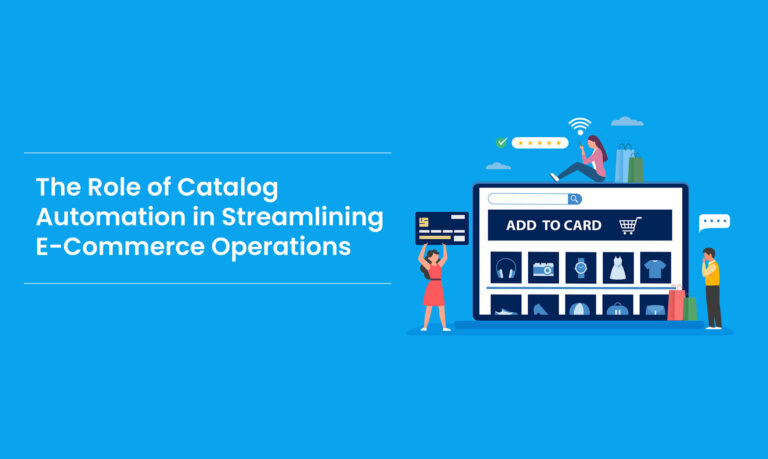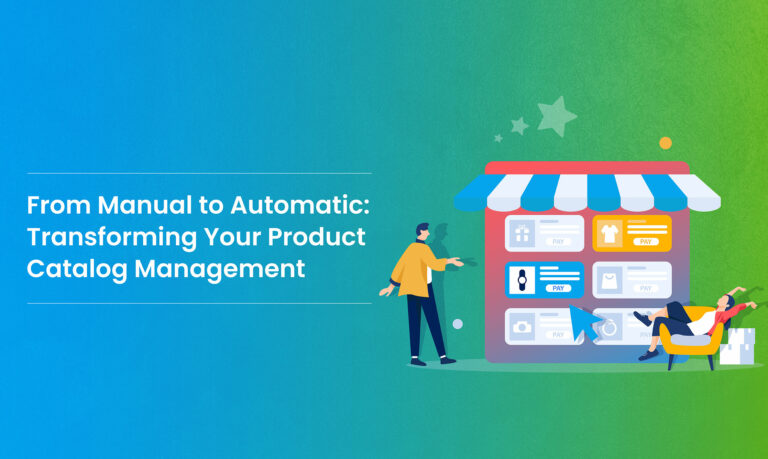In the era of the internet, businesses are always on the quest for ways to improve their customer experience. A significant aspect that affects customer satisfaction is Automated Catalog Management. By streamlining this procedure, automated catalog management systems have offered companies an opportunity to enhance their customers’ experiences radically.
Understanding Catalog Management
It is essential to know what makes up catalog management in order to understand the benefits of automated catalog management. A product catalog is a complete list of items that a company sells. This listing could be created and organized by someone responsible for engaging various sales channels such as websites, mobile applications, social media platforms, or physical stores.
Traditionally, catalog administration involves manual labor and is quite time-consuming. It requires manually entering information about a product, such as images and cost, in databases or spreadsheets. This process involves immense effort on the part of workers. Managing any alterations or updates would take much longer and thus lead to some inconsistencies across different avenues, resulting in frustrating instances for clients.
The Shift Towards Automation
More advanced technology has seen companies realize the limitations behind human-powered inventory control and understand how automation can help improve efficiency as well as accuracy. These systems utilize artificial intelligence (AI), machine learning (ML), and data integration, among others, to streamline the process. These aspects include:
- Data Entry: Instead of being done by individuals, automated systems may extract product details from other places like suppliers’ databases or manufacturers’ web pages, to name just a few sources. All these activities reduce the amount of human work associated with product attribute extraction, thereby minimizing errors.
- Content Enrichment: Automated systems use AI algorithms to generate or add more details to descriptions, specifications, and product photographs sourced from external databases. Such enriched content improves product listing quality and gives customers a better understanding of the products.
- Update Synchronization: All changes made to product information are automatically updated across all online sales outlets simultaneously, thus ensuring consistency and accuracy. Such automated processes ensure that consumers obtain the most recent information regardless of the channels they may have used.
- Personalization: Automated catalog management systems use customer data and purchase history to make personalized product recommendations and marketing messages. By doing so, this personalized approach makes sure that customers receive recommendations and other tailored offers related to their specific tastes or purchase history.
Benefits of Automated Catalog Management
Enterprises looking to improve their clients’ experiences can gain multiple advantages from switching to automated catalog management systems.
Improved Accuracy
Automation drastically reduces the possibility of errors associated with manual entry and updating of data in a system. This builds trust in customers who know that the company provides accurate information about its products, such as availability and prices. It also helps avoid potential mix-ups that may result from wrong pricing.
Efficiency and Saving Time
Automated inventory control helps free up critical resources and hence saves time for other essential business processes. Hours or days will be reduced to minutes when performing tasks like these, as people can spare more time to carry out strategic activities instead.
Consistency Across Channels
To provide a hassle-free customer experience, all sales channels must be consistent. Automated systems make sure that product information, pricing, and promotions are the same across online and physical stores, mobile apps, and social media platforms, thereby reducing confusion and frustration among customers.
Faster Time-to-Market
Companies can launch new products or update existing ones through automated catalog management without delays. Market trends, client preferences, and competitive pressures can be responded to by this agility, thus giving businesses a competitive edge in the marketplace.
Enhanced Customer Engagement
By delivering correct, relevant, and personalized product information to consumers, automated catalog management systems enhance engagement and satisfaction. Loyal customers are more likely to make informed purchase decisions and have positive interactions with brands, leading to increased loyalty and repeat business.
Scalability And Flexibility
When companies grow or introduce new products or sales channels, their catalogs may need scaling up to handle increasing volumes or complexities associated with the introduction of new products or the integration of additional sales channels to serve global customers. Automation gives businesses the flexibility to adopt these changes in their operations.
Data-driven Insights
Automated catalog management systems provide important information about customer behavior, preferences, and product performance. Pricing strategies based on this data also help in inventory management and marketing campaigns, thereby enhancing customers’ experiences and driving further revenue growth.
Disadvantages Of Automated Catalog Management
It is important to note that automated catalog management may have some drawbacks. It is important to know and understand these challenges to implement the process better. Here are some of the downsides.
Initial Investment
Implementing an automated catalog management system calls for an initial investment in software and hardware, as well as the training of staff. For small businesses with limited budgets, this could pose a problem as they need to consider their returns on investments before making any upfront decision.
Complexity and Customization
Automation of a catalog can be complex, especially since each business has its requirements and workflows that necessitate customization. This process of customization may take time and can be complicated, as it requires both technological know-how and knowledge of business procedures.
Dependency on Technology
Automated catalog management systems depend heavily on technology such as software platforms, data integrations, and cloud services, among others. It would not only paralyze the operation but also affect customer satisfaction if any technical glitches occur or software updates are done. Companies should have a backup plan to navigate through such unforeseen challenges.
Data Security Concerns
As automation takes place, so does the need to manage and protect large volumes of sensitive data, including information about products, service levels, prices, and customer details. Automation systems with security vulnerabilities can lead to a loss of trust by customers, making them face strict penalties from various regulatory bodies.
Lack of Human Touch
Automation also leads to a loss of human touch in customer interactions. Some customers may prefer personalized assistance or expert advice when browsing or making purchasing decisions, which automated systems cannot always offer.
Risk of over-reliance
Businesses that rely too much on automated catalog management systems may become vulnerable to disruptions if the system breaks. To make sure you stay adaptive during changing times, it is important to strike a balance between automation and human control mechanisms.
Quality Control Challenges
Streamlined processes through automation only remove some of the quality control challenges. If a mistake occurs in product data or any form of update synchronization and content enrichment, this may result in negative consequences on brand reputation and customer experience.
Modern retail operations require automated catalog management because it is necessary for businesses to streamline processes, improve accuracy, and enhance customer experience. Automating data entry, content enrichment, data synchronization, and personalization with technology can help businesses stay competitive in today’s fast-moving digital marketplace. That’s why Rubick.ai offers one of the best automated catalog management services in the market.
Furthermore, as customers’ expectations change, the introduction of an automated catalog management system will be indispensable for any business that wants to make shopping experiences unique to create loyalty, improve satisfaction among their clients, and ensure long-term success. By incorporating automation into their systems, companies not only meet customers’ needs but exceed them, thereby distinguishing themselves from their competitors.


